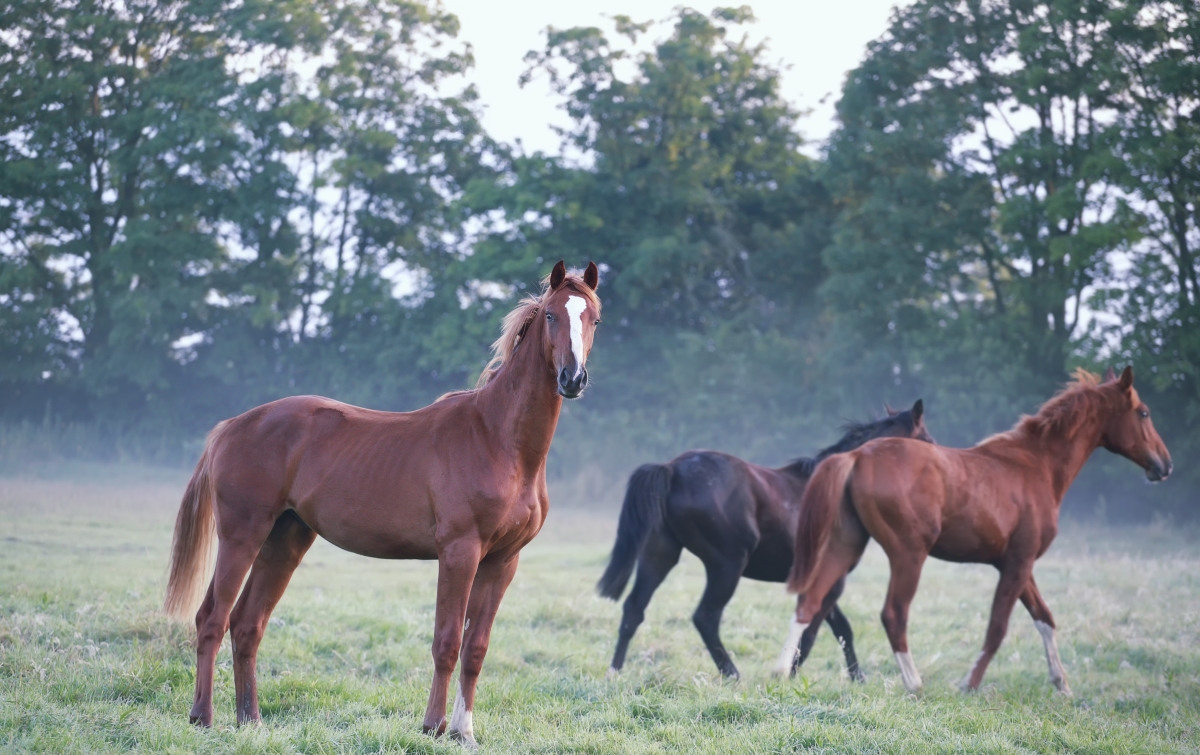Scientists believe that horses evolved to be very afraid of predators. In the wild, a horse that is not alert to danger is more likely to be killed by a predator. This fearfulness has been passed down through generations of horses. Today’s domestic horses still have this instinctual fear. Over the millennia, even after we started taming the horse, we humans have fed on horses. This makes horses have an inherent fear of humans and this is a behavior we need to train for horses to feel safe with us.
Factors Influencing the Horse To Become More Easily Frightened
Many horse owners lose patience and think their horses are silly and skittish when they are just scared. To understand horses, we need to see the world as if we were prey animals, like horses. Then it’s easier to understand what scares them.
Many things can frighten a horse and some factors influence the horse to become more easily frightened.
- poor eyesight
- poor hearing
- unbalanced feeding or a change in the feed that gives the horse too much energy and makes it overloaded

Innate Trait
Fear in horses seems to be an innate trait, i.e. some horses are more easily frightened than others and this becomes clear at an early age (foals). Researchers have shown that horses that are easily frightened as foals also continue to be easily frightened as adults. Studies have also shown that the amount of fear varies between breeds.
- Quarter Horses
- Shetland Ponies
- Highland Ponies
- Irish Draft Horses
- Appaloosa Horses
- English Thoroughbreds
- Arabian Horses
- Welsh Ponies
Sudden Or Moving Objects Scares Horses
Most of the time, horses are not afraid of new things, but rather of things that appear suddenly. Thus, moving objects such as a car can be frightening to a horse if it appears suddenly. While a parked car can be considered completely harmless. Moving objects in the form of other animals to which the horse is not accustomed can also cause fear. One example of this has been proven in studies of horses’ fear of cows.

Different Eyesight Explains Some Equine Behavior
Horses’ eyesight works a little differently from humans, which may be one reason why horses become frightened. Horses see very well in the dark but can be sensitive to glare. For example, an oncoming car with headlights in the dark can be frightening. The same fear can occur when a horse walks from a dark stable into bright sunlight – it becomes overawed and frightened. Even a camera flash can thus be frightening for a horse. Instead of getting angry with the horse, give it some time to adjust, which is usually only a few seconds.

Also, when the horse must focus its gaze on an object it works a little differently. To see an object clearly on the ground the horse wants to lower its head/neck. If it can’t because of a rider holding the reins tightly it may instead of seeing the object become afraid of it. Instead, if the horse wants to identify an object far away, it will want to raise its head to get a good view.
Horses may also have difficulty identifying depths. Horses may, for example, be very afraid of puddles. They do not know if it is very deep water and could therefore be fatal to them or just a shallow puddle.
Sounds Can Cause Stress and Fear In Horses
Horses can react with stress and fear when they hear certain sounds. This has been demonstrated in studies by looking at behavioral change and measuring heart rate. For example, horses have been shown to react with anxiety when exposed to predator sounds.

Fear of Small and Confined Spaces
Horses often show fear of entering a narrow horsebox or other confined space. This fear is natural for horses as they have innate claustrophobia. For a wild horse, it is completely unnatural to enter a small space without vision around it, as it would be very easy prey for predators.

Photo: Jebulon, CC BY-SA 3.0 https://creativecommons.org/licenses/by-sa/3.0, via Wikimedia Commons
What Does a Horse Do When Scared?
How do horses show they are nervous or afraid? According to several studies, increased heart rate is a clear marker of fear in horses. Other measurable parameters include elevated cortisol levels in saliva and blood. But what you as a horse owner see and notice are rather behavioral changes. Because most horses show that they are scared through specific behaviors such as:
- Snorting, flaring their nostrils, and blowing the air out quickly to warn the other horses in the herd
- By a tense posture with the head held in a high position
- Show the whites of their eyes
- Flight: some horses are more discreet until suddenly an explosive reaction occurs. The greatest sign of fear is panic and flight.
- Possibly attacking what it considers a threat.

In ridden horses, these symptoms are usually seen when the horse is frightened:
- The horse stops suddenly
- Alarmed posture
- Stares intensely at the frightening object
- If the object is frightening enough, there might be a flight response
What Are Horses Most Afraid Of?
Studies show that horses react more to sudden visual and auditory stimuli than to smells. This has been measured by observing that the horse’s heart rate increases in response to fear.
Examples of things horses can be afraid of:
- Sudden noises
- Sudden touch
- Confined spaces
- Sudden movements (e.g. other animals that may be perceived as predators, flying plastic bags, etc.)
- Being left alone (horses are herd animals and can become very anxious when left alone)
- Some horses have also built up fear for certain special moments e.g. shoeing, vaccination, riding

Do Human Scares Horses?
Yes, sometimes they do. In an article Ph.D. candidate, in the Charles Sturt School of Animal and Veterinary Sciences, Cathrynne Henshall and Professor Paul McGreevy, Animal Behaviour and Animal Welfare Science, University of Sydney, list 10 common things humans do that scare and confuse horses
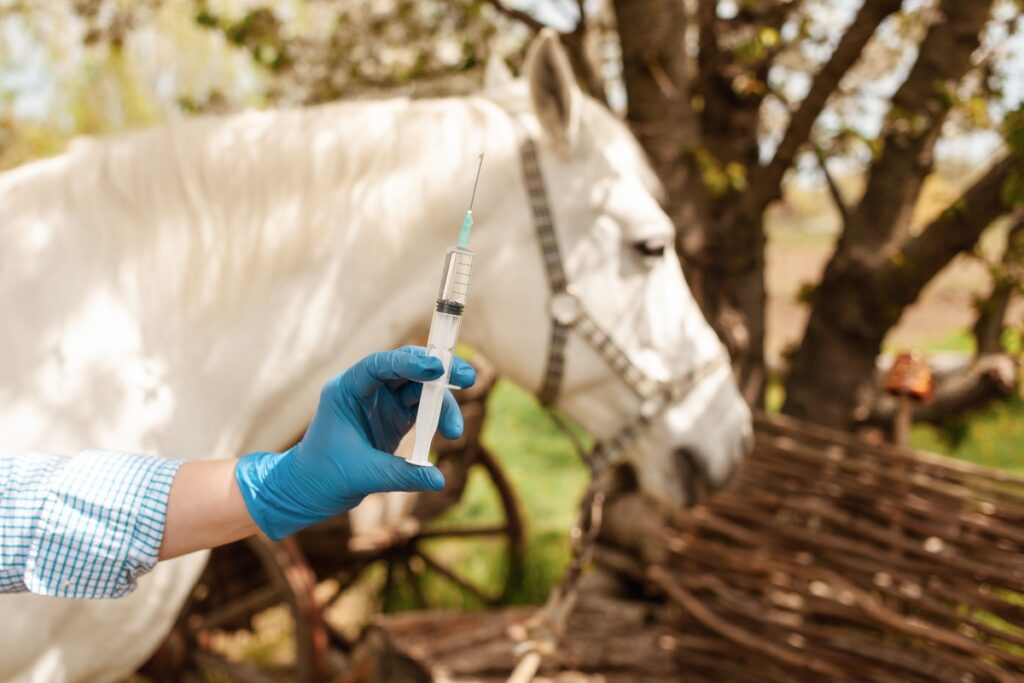
By understanding what we humans do that may frighten horses, we can improve the way we handle horses and avoid situations where horses become defensive and aggressive.
Why Is It a Problem That Horses Get Scared?
Frightened horses are often difficult and dangerous to handle. One of the most common causes of riding accidents is that the horse has been spooked by something, and the rider falls off. This is something that must be taken very seriously. In many countries riding accidents are the most common cause of injuries caused by leisure activities. Are horses always scared? No. Most of the time, horses are calm and pleasant animals that provide a lot of pleasure and recreation.
How To Help Horses Not Get So Scared
It’s natural to ask how you calm a scared horse when you’ve been in a situation with a scared horse. Fear in horses can harm the welfare, health, and reproduction of animals, and something we want to avoid. According to researchers, all horses can, in principle, be trained not to take flight when scared. But, it takes a lot of knowledge, time, and patience to train horses not to be so easily frightened. It is thus important to identify easily frightened horses early on, as foals. These foals must end up in the right hands and be trained. Or else they are at the risk of ending up with a novice horse owner where accidents may instead become a fact.
Be Calm
If the horse is stressed, it is not advisable to pat it loudly. It is better to just put a hand on the horse or stroke it gently or scratch it. It is also important that you are calm, and that you move and breathe slowly. By being calm and relaxed when handling horses, the chances are increased that the horse will also be relaxed and calm. This allows the horse to maintain its calmness, or to react only with small reactions, to situations that it perceives as unpleasant. By gradually acclimatizing the horse to new objects, the risk of frightening and/or sensitizing the horse is reduced.
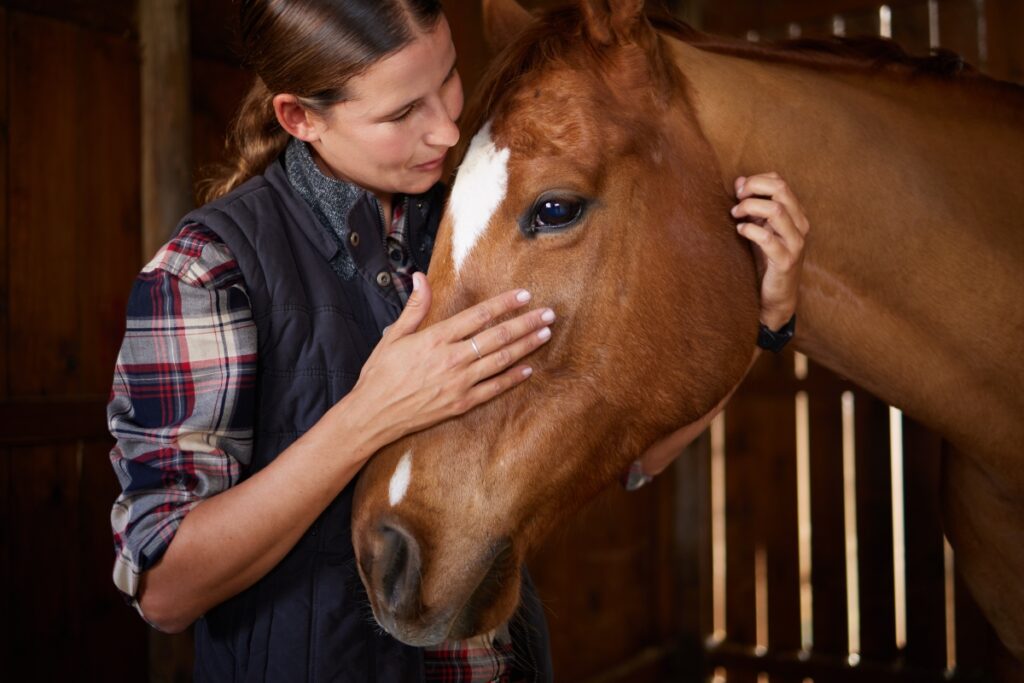
Calm Friends
An easily frightened horse can be helped by being in a herd with other calm horses. This is particularly true for young horses, which can learn to be less fearful by being reassured by an experienced, calm older horse. Training foals and accustoming them to new things and objects is also important. With this training, they will become safe and stable riding or driving horses in the future. According to studies, foals exposed to frightening objects during their first 8 weeks of life with a habituated mother will have less fear in the future.
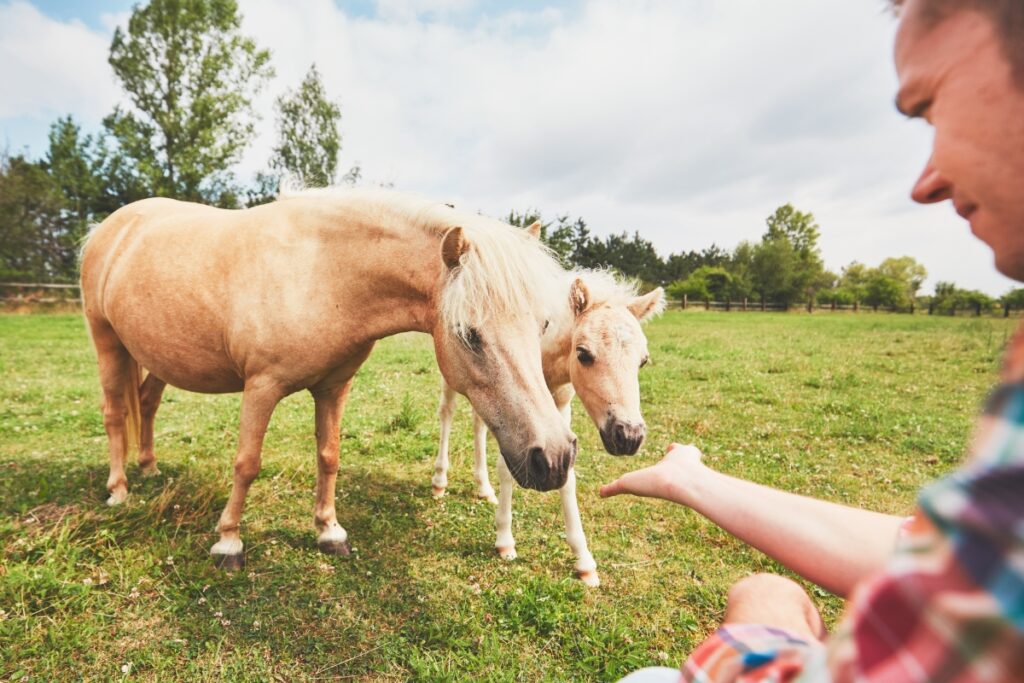
Habituation
One way to train horses to feel less fear and train away the flight response is habituation. In the case of habituation, the feeling (which can be positive or negative at first) becomes neutral. An example is horses that have their paddock near an airport. They have no problem continuing to graze even though planes are landing and taking off right over their heads. Whereas horses that are unaccustomed to planes become frightened and try to escape.
Counter-conditioning
You can turn the negative into something positive. This is called counter-conditioning and simply means that the horse connects something frightening to something positive. Now the horse gets a positive feeling for what was before frightening. For example, you might give the horse a treat when it sees the dangerous cow it is afraid of. And then further rewarding the horse if it dares to approach the frightening object. In this way, you can turn the negative into something positive that the horse is not afraid of but instead associates with treats. But, if the horse instead drops the treat (which it usually loves), this could be a sign that it is very frightening, and you need to be careful not to end up in an escape situation. One way to assess how scared the horse is is to take its pulse.
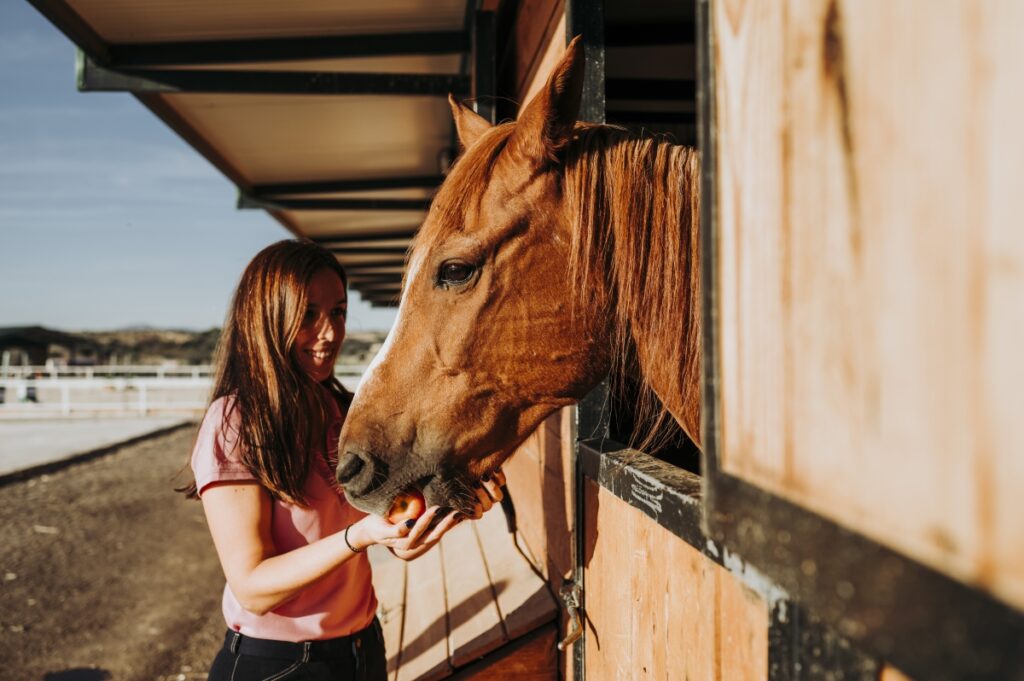
Desensitization
Systematic desensitization involves gradually exposing a horse to a frightening stimulus. You must begin at mild levels that don’t cause fear. Done correctly, this results in the horse not being frightened when faced with maximum exposure to the frightening stimulus.
Positive Reinforcement
Positive reinforcement training involves using a reward when training the horse. For example, the horse is given treats to encourage the desired behavior. Clicker training is an example of this method. Watch the video below and learn how to handle and train a horse afraid of injections.
Conclusion
Alertness, fear of new things, and flight have been crucial to the survival of the horse and this still lives on in today’s horses to this day. Thus, we must learn to manage horses’ innate fears and understand why horses react as they do in frightening situations. There are many ways to train horses to deal with fear; it is best if it is started when the horse is young. I hope this article was helpful and that you learned a lot.
Sources
Fear in Horses, Responses to Novelty and Habituation, Janne Winther Christensen, 2006 https://pub.epsilon.slu.se/1016/
Wiśniewska, A.; Janczarek, I.; Wilk, I.; Tkaczyk, E.; Mierzicka, M.; Stanley, C.R.; Górecka-Bruzda, A. Heterospecific Fear and Avoidance Behaviour in Domestic Horses (Equus caballus). Animals 2021, 11, 3081. https://doi.org/10.3390/ani11113081
Christensen, J.W. Early-life object exposure with a habituated mother reduces fear reactions in foals. Anim Cogn 19, 171–179 (2016). https://doi.org/10.1007/s10071-015-0924-7
Maria Vilain Rørvang, Janne Winther Christensen,
Attenuation of fear through social transmission in groups of same and differently-aged horses,
Applied Animal Behaviour Science, Volume 209, 2018, Pages 41-46, ISSN 0168-1591, https://doi.org/10.1016/j.applanim.2018.10.003.
Pearce, Animal learning and cognition – An Introduction, 2008, ISBN 9781841696560
Lloyd, A. S., Martin, J. E., Bornett-Gauci, H. L. I., & Wilkinson, R. G. (2008). Horse personality: Variation between breeds. Applied Animal Behaviour Science, 112(3-4), 369-383. https://doi.org/10.1016/j.applanim.2007.08.010
Janczarek, I., Stachurska, A., Kędzierski, W. et al. The intensity of physiological and behavioral responses of horses to predator vocalizations. BMC Vet Res 16, 431 (2020). https://doi.org/10.1186/s12917-020-02643-6

